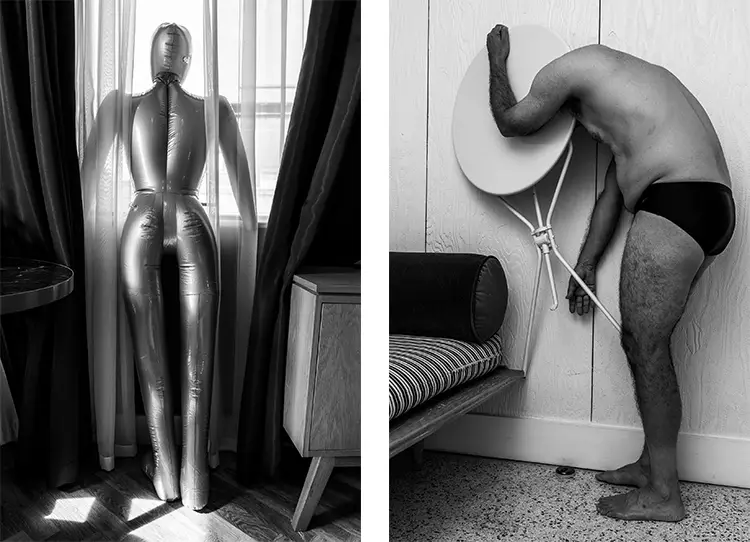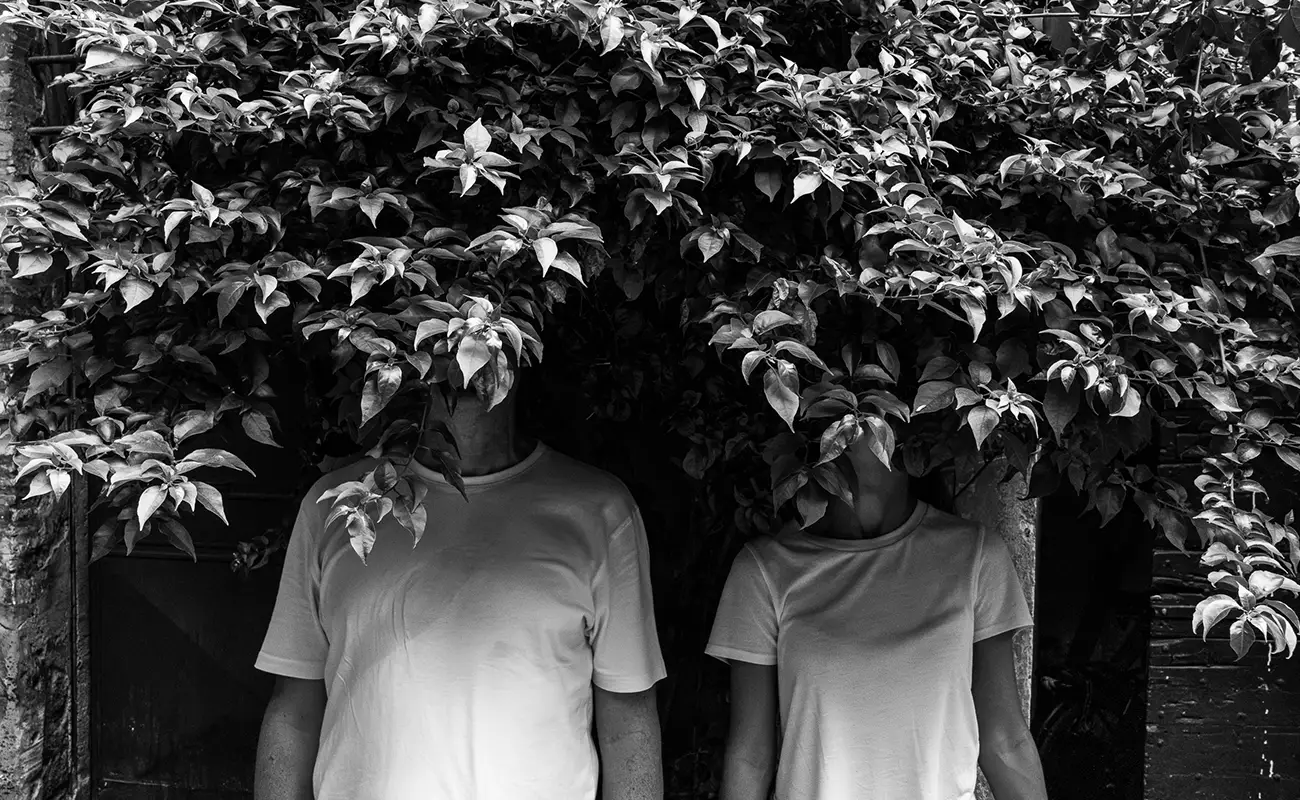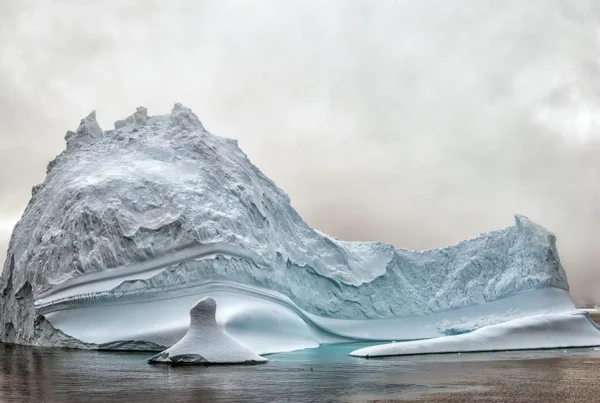“The image reflects what language can’t hold, and the poem rewrites what the image leaves unsaid.”
A Shifting Lens: Identity, Displacement, and the Art of Uncertainty
Yiorgos Michael, a self-taught visual artist and poet, constructs a distinct artistic world shaped by movement—geographical, linguistic, and emotional. Born in Cyprus with Greek ancestry and now residing in the United States, he draws from a life threaded through different languages and geographies. This history of transition subtly permeates his dual practices of photography and poetry, each feeding the other with questions of estrangement, belonging, and memory. His work resists categorization, balancing between constructed image and documentary honesty, between articulated verse and visual silence. Whether writing in Greek or English, or capturing images with his lens, he continually interrogates how we inhabit space and time, and how much of ourselves we leave behind in that process.
His photography often centers on emotionally charged metaphors—ghosted figures, veiled faces, fleeting gestures caught in transit. These are not merely stylistic choices but deeply considered visual motifs that speak to themes of absence and identity. Michael’s photographs frequently take place in anonymous spaces: hotel rooms, corridors, and shifting urban backdrops. These sites are not just physical locations but emotional coordinates, evoking the liminal state of being between departure and arrival. His aesthetic sensibilities evoke early photographic experiments, borrowing the emotional sensitivity of Pictorialism and echoing the psychological intensity found in the works of Francesca Woodman and Duane Michals. At times, the quietude of his compositions masks a deeper unease, one shaped by years of navigating the dissonance between interior self and public presentation.
Equally significant is his poetic voice, a companion to the photographic image rather than an illustration of it. Michael explores fragmentation, dislocation, and the tension between clarity and ambiguity. His writing opens a space for what the image leaves unsaid, just as the photograph makes visible the wordless residue of emotional states. Written in both of his spoken languages, his poetry extends his inquiry into silence and rupture, often reflecting the same unresolved questions that animate his photography. For Michael, neither medium is more complete than the other; together, they form a dialogue that is at once visual and visceral, navigating the spaces where language ends and imagery begins.

Yiorgos Michael: The Poetics of Space and Stillness
Michael’s visual language is grounded in portraiture, yet avoids conventional modes of representation. He’s drawn to figures in transition, often masked or obscured, existing in the gray zone between visibility and anonymity. His subjects inhabit architectural spaces that carry emotional resonance: not only the facades and interiors of buildings but also their psychic implications. Doorways, mirrors, corridors, and beds become recurring motifs—structures that suggest movement and stasis, entry and withdrawal. These settings are not incidental but integral to the emotional landscape of his work, emphasizing how architecture silently scripts our behavior and gestures, both physical and emotional. In his photographs, the environment becomes a mirror, reflecting the internal architecture of his subjects’ minds.
A defining feature of Michael’s style is the blurring of distinction between external and internal space. Many of his photographs are taken in liminal zones—transitional places like hotels and airports—that reflect his broader preoccupations with identity and belonging. These are not just locations for his figures; they become characters themselves, imbued with psychological weight. His camera captures the stillness of such spaces not as emptiness but as suspended possibility, a breath held between what was and what might come. This emphasis on spatial ambiguity echoes the larger questions he poses about how people inhabit the self—often only partially, or with a sense of estrangement.
Themes of memory, aging, emotional distance, and self-restraint recur throughout his portfolio. He focuses not on dramatic gestures but on nuanced cues: a slouched shoulder, a downward glance, a figure walking away. These seemingly minor details carry significant emotional gravity, acting as visual shorthand for broader experiences of isolation, desire, and loss. Michael’s work does not seek to offer resolution but rather creates an opening for contemplation, inviting the viewer to step into the quiet tension that permeates each frame. His images and poems are less about telling a story than about holding space for unspoken feelings—the kind that linger like a forgotten scent or the trace of a touch.

Echoes in Absence: Memory, Gesture, and Residual Presence
In both his photography and writing, Michael is acutely attentive to what remains after something or someone has departed. His reflections on Wolfgang Tillmans’ Faltenwurf (blau) from 2020 underscore this sensitivity. The image of three intertwined pairs of trousers—shot during the pandemic, a time of global isolation—carries a poignant metaphor. What at first glance appears as oceanic folds gradually reveals itself as worn fabric, once molded to bodies, now vacated. This visual misdirection draws attention to the tension between presence and absence, form and memory. Michael finds resonance in how the piece uses abstraction to embody a longing for contact, intimacy, and the lingering residue of human connection.
His own work often follows this principle—making the invisible felt through traces and textures rather than overt narrative. Whether photographing a veiled figure or composing a fragmented stanza, he is more interested in the echo than the event. Absence is not a void in his practice but a presence in its own right. He captures the afterimage of emotion: the way a room feels after someone leaves, or the atmosphere a word creates even when unsaid. In this sense, his approach aligns with artists like Felix Gonzalez-Torres and Francesca Woodman, who used visual simplicity to convey complex emotional undercurrents. Michael’s commitment to emotional restraint allows each piece to breathe, inviting reflection without demanding interpretation.
The interplay of memory and gesture finds a focused expression in his evolving project Someplace / Not Here / Still There, But Not. This body of work compiles images taken in cities during transitory periods—hotel rooms, corridors, urban streets—framed around a solitary, masked figure navigating various spaces. The figure functions as both witness and symbol, simultaneously grounded and spectral. Other people appear too, each in different states of solitude or connection, each seemingly caught between opposing impulses of retreat and engagement. The project functions as a meditation on dislocation, identity, and the shifting thresholds of belonging. Through it, Michael constructs a visual poem of migration—one not only of place, but of emotional terrain.

Yiorgos Michael: Art as Transit, Language as Companion
Michael’s artistic practice thrives on movement—not only between countries and disciplines, but also between modes of attention. His workspace is rarely fixed; equipped with a camera, a lens, and a laptop, he often creates while in motion. For him, travel is not a disruption but an enabler of clarity. Shifts in time zone and place open a mental space that is quiet, introspective, and emotionally receptive. In that dislocated stillness, ideas begin to surface. He speaks of disappearing into the process—eschewing multitasking in favor of deep immersion, whether editing an image or sculpting a line of poetry. His attention to emotional tone over technical detail allows his work to retain a certain fragility and immediacy.
His influences span a wide array of disciplines, mirroring the hybridity of his own practice. From the dramatic chiaroscuro of Caravaggio to the architectural surrealism of Giorgio de Chirico and the existential rawness of Francis Bacon, the visual arts have given him a foundation in emotional atmosphere. In photography, artists like Man Ray and László Moholy-Nagy offer conceptual depth, while the intimacy of Nan Goldin and the abstraction of Franco Fontana inform his approach to subject and composition. In poetry, he draws inspiration from Constantine Cavafy and Ocean Vuong, whose works balance historical weight with emotional specificity. Sound and cinema also shape his artistic sensibility; the atmospheric narratives of David Lynch and the emotive power of Sigur Rós resonate deeply with his commitment to ambiguity and feeling.
Photography and poetry remain his chosen forms not by accident, but by affinity. He describes photography as a companion—portable, responsive, and attuned to the present moment. Poetry, meanwhile, acts as a method of emotional processing, a space to metabolize experience and give it structure. While he has explored other mediums in the past—painting, charcoal, woodwork—these two forms offer him the fluidity and immediacy he seeks. Together, they allow him to dwell in contradiction: to honor clarity while courting uncertainty, to capture stillness while evoking motion. In every photograph and poem, Yiorgos Michael navigates the thresholds of visibility, memory, and silence—not to resolve them, but to bear witness to their haunting beauty.






